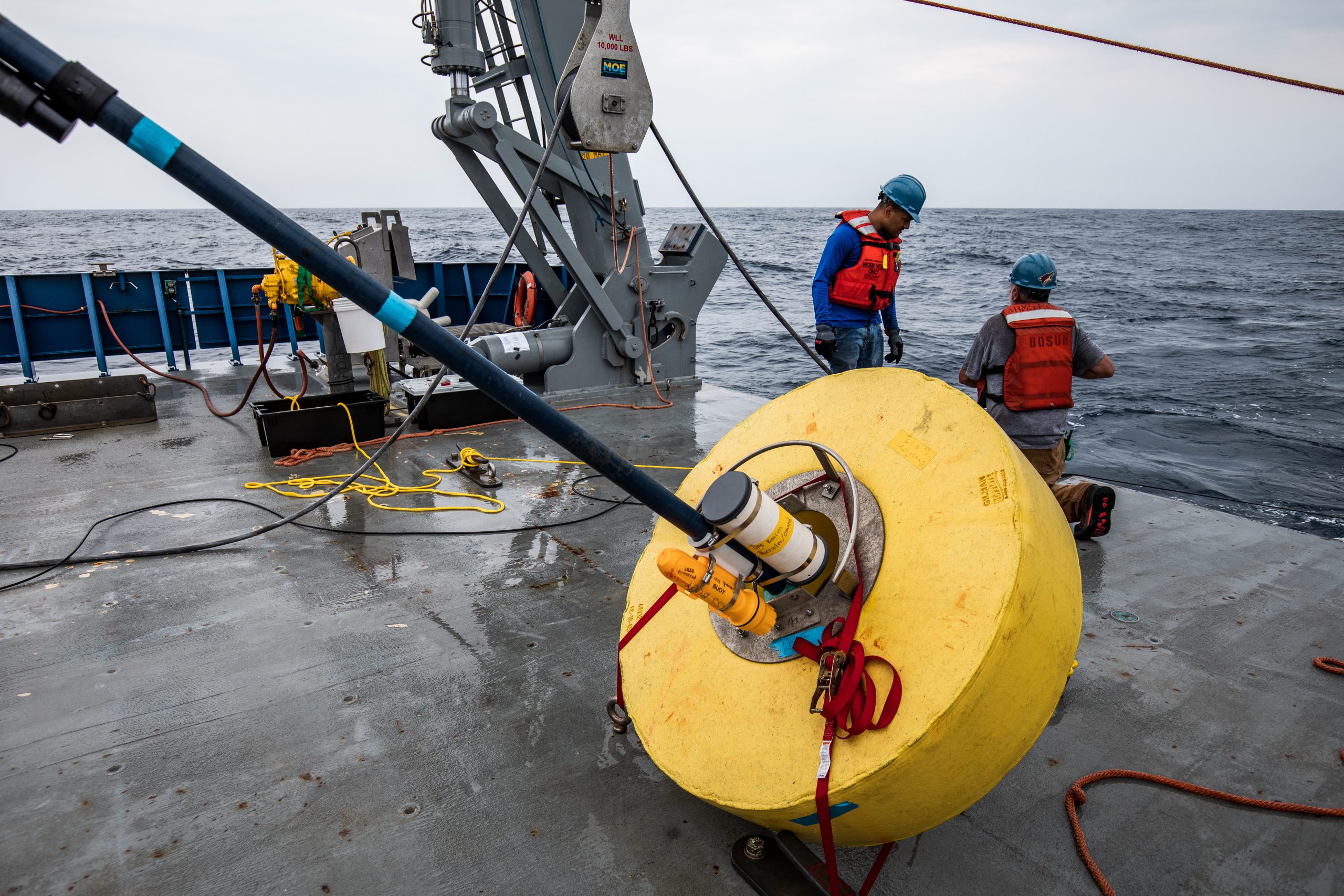Installing the Ocean Twilight Zone Observation Network
Mission Overview
In this short cruise, the OTZ team installed the first instruments of the new Ocean Twilight Zone Observation Network—a group of heavily-instrumented moorings in the northwest Atlantic. Once complete, the network will continuously monitor the twilight zone over an area of roughly 250,000 square kilometers (155,300 square miles), providing scientific data continuously over months or years.
On this mission, the team deployed and tested three key components of the network—two acoustic sound-source moorings (which will act as beacons for mobile instruments to determine their position in the future), and one additional mooring that holds bioacoustic sensors and sediment traps to capture sinking particulate material. While at sea, OTZ scientists also collected environmental DNA samples from seawater at a variety of depths.
All of the data gathered during the cruise will be used to close critical scientific gaps in knowledge of the Northwest Atlantic's twilight zone—including its biomass, animal distribution, biodiversity, life histories, food web structure, and biological/physical processes that impact carbon transport.

Quick Facts
| Dates | July 19-28, 2021 |
| Location | Northwest Atlantic |
| Ship | R/V Neil Armstrong |
| Chief Scientists | Simon Thorrold and Andone Lavery |
| Scientific Objectives | Install and test new OTZ observation network buoys Examine distribution of biomass near buoy sites Survey marine snow in the area Collect environmental DNA |
| Technology | Observation Network acoustic sound sources, bioacoustic sensors, sediment traps |






